If you are gaming on a console, such as the Playstation 5 or the Xbox Series X|S, and have searched the internet for information about how to fix a problem you have doubtless come across people talking about NAT Type. You've probably been told that you need NAT Type Open, or NAT Type 2 to fix your problems, join a lobby, make voice chat work, and any number of other gaming issues. Most of this is true.
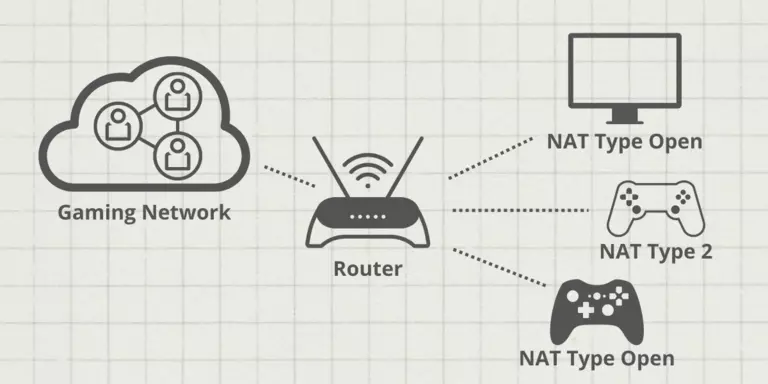
Here at Portforward.com, we deal with fixing NAT Type issues often. It's what we do. There is a lot of misinformation out there, so this guide aims to be the definitive guide as to what NAT Type is on each console and what it means to have each NAT Type.
If you do not want to read this entire article, here is the summary that you should walk away with:
- On PlayStation, the goal is NAT Type 2.
- On Xbox, the goal is NAT Type Open.
- The best way to achieve this is to forward the correct ports in your router.
What is NAT?
Put simply, NAT is the technology that makes your home network. It started a long time ago when ISPs didn't want to give out more than one IP address to customers, so home routers were invented that would take that single external IP address and fake it into a bunch of internal IP addresses. For most things, it works great, but sometimes it breaks the internet. Especially in gaming.
NAT has the following effects on a network:
- Connections created from inside your home network like surfing the web, checking email, and joining a game work fine because the router passes the connection request out. Once the connection is established data flows both in and out. The important thing is that the connection was created from inside your network, so it made it out.
- Connections coming into your network from the outside are dropped by default. This is because the router doesn't know which internal device the incoming connection is intended for. In a multiplayer game, these incoming connections are sometimes required for joining lobbies and voice chat.
The two major gaming console types, Sony PlayStation and Microsoft Xbox, both suffer in a closed NAT environment. The real confusion comes from their choice of different names for the state of your NAT.
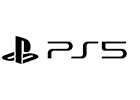
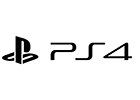
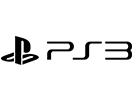
PlayStation NAT Types
Sony decided to name NAT Types with a number ranging from 1 to 3, with 1 being the best and 3 being the worst. According to their official documentation, the 3 different NAT Types are:
- Type 1: The system is connected directly to the Internet.
- Type 2: The system is connected to the Internet with a router.
- Type 3: The system is connected to the Internet with a router.
It appears that NAT Type 2 and NAT Type 3 are the same, but they are very different. Type 2 is the usual goal with a PlayStation.
NAT Type 1
In order to have NAT Type 1 on your PlayStation you need to ditch your router. Please don't ditch your router.
Sony has not told anyone what the criteria for a Type 1 connection are, but many people suspect that one of the things the PlayStation looks for is if you have an IP address in the "192.168.x.x" range then you are not going to get NAT Type 1. This is a pretty good guess because using every trick in the book from forwarding ports to a full DMZ of the PlayStation still tends to only yield NAT Type 2, which is bizarre. A proper DMZ pointing at your PlayStation is as good as a no-router connection to the internet and there is no reason to give it any less than "full connection" status. Again, no one knows why.
There is one Hail Mary pass method of getting NAT Type 1 behind a router and that is to put your router in bridged mode. The problem with bridging your router is that the PlayStation will be the only device that can talk on your network. It will bring the rest of your home network down. Please don't bridge your router.
NAT Type 2
NAT Type 2 is the goal when setting up a PlayStation. In order to get NAT Type 2 on your PlayStation you need to do one of the following:
- Forward the Sony Network ports in your router to your PlayStation, or
- Setup a DMZ in your router pointing at your PlayStation, or
- Have a fully UPnP compliant network. Usually, this means having a router that supports UPnP and is enabled.
Any of the above methods should net you a NAT Type 2 on your PlayStation. We think that port forwarding is the best option for security. UPnP is a dangerous protocol to have enabled on your network because it allows unknown software to pinhole your router without even asking you, putting your entire network at risk. DMZ is an effective solution, but you can only have a single DMZ on your network at a time so it's best reserved for when it's really needed.
NAT Type 2 means the following:
- Your PlayStation is behind a router
- Your router is aware of your PlayStation and is forwarding incoming packets on predefined ports to your PlayStation.
- Your PlayStation is able to receive incoming packets from the internet including connection requests from other players.
- You are able to be the host of multiplayer lobbies.
- You should have no limits on chat, video.
If you have NAT Type 2 then you are done. There is nothing more that you need to do.
NAT Type 3
NAT Type 3 is not what you want. NAT Type 3 means that your PlayStation is behind a router and does not have the PlayStation network ports forwarded to it, or it is not in the DMZ, or UPnP is not working. Your PlayStation can connect to other players, but other players can not connect to you. This means that you will never be the host in a multiplayer game. Being the host in a multiplayer game can sometimes reduce your lag so much that it makes the difference between coming in first and last.
NAT Type 3 means the following:
- Your PlayStation is behind at least 1 router
- Your router is not forwarding incoming connection requests to the PlayStation.
- You are NOT able to be the host of multiplayer lobbies.
- You WILL have limits on chat and video.
If you have NAT Type 3 on your PlayStation then you need to forward the PlayStation network ports in your router to your PlayStation in order to get NAT Type 2. This can also be caused by having multiple routers on your network.

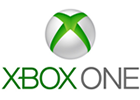
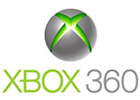
Xbox NAT Types
Microsoft decided to name NAT Types as Open, Moderate, and Strict. According to their official documentation, the 3 different NAT Types are:
- Open NAT: With an OPEN NAT type, you're able to chat with other people, as well as join and host multiplayer games with people who have any NAT type on their network.
- Moderate NAT: With a MODERATE NAT type, you're able to chat and play multiplayer games with some people; however, you might not be able to hear or play with others, and normally you won't be chosen as the host of a match.
- Strict NAT: With a STRICT NAT type, you're only able to chat and play multiplayer games with people who have an OPEN NAT type. You can't be chosen as the host of a match.
These seem pretty similar to the Sony names, but they are not identical. Open NAT is the goal with an Xbox console.
NAT Type Open
NAT Type Open is the goal when setting up an Xbox. In order to get NAT Type Open on your Xbox you need to do one of the following:
- Forward the Xbox Live ports in your router to your Xbox, or
- Setup a DMZ in your router pointing at your Xbox, or
- Have a fully UPnP compliant network. Usually, this means having a router that supports UPnP and is enabled.
Any of the above methods should net you a NAT Type Open on your Xbox. Our site recommends a port forward as the best option to get NAT Type Open. DMZ is the easiest choice, but it's a bit overkill and best reserved as a testing tool for network problems. UPnP is a really dangerous protocol and it allows any piece of malware on your network to forward a port to any device inside your home without you knowing it. We keep UPnP turned off on our routers for increased security.
NAT Type Open means the following:
- Your Xbox may or may not be behind a router.
- If your Xbox is behind a router, then your router is aware of your Xbox and is forwarding incoming packets on predefined ports to your Xbox, usually 3074.
- Your Xbox is able to receive incoming packets from the internet including connection requests from other players.
- You are able to be the host of multiplayer lobbies.
- You should have no limits on chat or video.
If you have NAT Type Open on your Xbox then you are done. There is nothing more for you to do.
NAT Type Moderate
NAT Type Moderate is a confusing term because it doesn't really have a solid definition in the networking world. The best that we can tell is that Microsoft came up with this term to keep confusion down, but then failed to define exactly what it means causing greater confusion in the end.
You do not really want NAT Type Moderate on your Xbox. It's certainly better than Strict, but it is almost guaranteed that things are not going to work right. They might work right now and then not work at all in a few days. You might have greater lags, higher pings, and general difficulty joining lobbies and chat. You will almost never be the game host.
The apparent characteristics of NAT Type Moderate are:
- Your Xbox is behind a router.
- You might have UPnP half working forwarding some ports but not others.
- You might have some ports forwarded but not others.
- Your router might have a firewall that is blocking some packets but not others.
Some users have reported that you can get NAT Type Moderate if your router is able to forward ports from some users but not others. This implies that the Xbox Live NAT Type test is hitting your network from multiple servers during the NAT Type test and seeing if some of the packets make it in and some of them do not. I highly doubt that this is the case.
If you have NAT Type Moderate you need to forward ports in your router to your Xbox in order to get NAT Type Open.
NAT Type Strict
You do not want NAT Type Strict on your Xbox. If you have NAT Type Strict then you definitely do not have your ports forwarded correctly. This can also be caused by having multiple routers on your network.
NAT Type Strict means the following:
- Your Xbox is behind at least one router
- Your router is not forwarding incoming connection requests to the Xbox.
- You are NOT able to be the host of multiplayer lobbies.
- You WILL have limits on chat and video.
If you have NAT Type Strict then you need to forward ports in your router to your Xbox in order to get NAT Type Open.
PC NAT Types
Increasingly we are seeing PC games report NAT Type similar to consoles. Most PC games are using the Microsoft system of NAT Type, so you are likely to see NAT Type Open, NAT Type Moderate, and NAT Type Strict in your games.
The biggest difference in PC gaming is that the games tend to report your NAT Type from within the game, whereas in a console you tend to see your NAT Type in the dashboard of the console.
In PC gaming if the game reports NAT Type Strict or NAT Type Moderate just read the above Xbox section for the same info.
Comparing NAT Types
NAT Types describe the quality of your network connection as it relates to gaming. The following table helps to summarize the information in this guide:

It's important to note that NAT Type Moderate is listed as Not Good. For most users NAT Type Moderate is not good enough and you need to forward ports to get NAT Type Open.
NAT Type Open vs NAT Type 1
NAT type Open and NAT type 1 are not the same thing.
At first, it appears that these two are the same but they are not. Notice in the Sony definition that in order to get NAT Type 1 your PlayStation has to be connected directly to the internet. Microsoft makes no mention of a connection to the internet. Indeed in practice, it's almost impossible to get a PlayStation to report NAT Type 1 when you are behind a router.
No one knows exactly why a PlayStation reports NAT Type 2 when you have a properly setup DMZ or port forward, but in most cases it does. We suspect Sony has decided to detect a class C network such as 192.168.x.x and considers that to not be NAT Type 1. Meaning that no matter what you do, if you are on a class C network you will not get NAT Type 1.
NAT Type Goals:
- On PlayStation, the goal is NAT Type 2.
- On Xbox, the goal is NAT Type Open.
NAT Type Strict vs NAT Type 3
These appear to be the same exact thing. NAT Type Strict and NAT Type 3 both mean that you do not have your ports forwarded and your console is not able to accept incoming connection requests.
If you have NAT Type Strict or NAT Type 3 then you need to forward ports in your router in order to get NAT Type Open or NAT Type 2.








